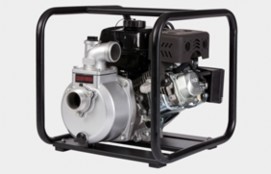Water pump transfer pumps are crucial for various tasks, ranging from home to industrial uses. These devices are built to swiftly and effectively move large amounts of water, making them perfect for jobs like draining pools, relocating water, and managing flood situations. This extensive guide covers all aspects of water transfer pumps, including their types, applications, and maintenance tips.
Understanding Water Transfer Pumps
A water transfer pump is designed to transport water from one location to another. They are versatile, capable of handling different types of water, including fresh, salt, and contaminated water. Available in multiple sizes and capacities, these pumps can cater to a wide array of applications.
Varieties of Water Transfer Pumps
Centrifugal Pumps
- Function: Utilize a rotating impeller to draw water in and expel it through a discharge pipe.
- Ideal For: General water transfer, irrigation, and draining tasks.
- Benefits: High flow rate, easy maintenance, and cost-effective.
Diaphragm Pumps
- Function: Employ a diaphragm and check valves to move water.
- Ideal For: Handling dirty water, slurry, and thick fluids.
- Benefits: Can process solids, self-priming, and durable.
Submersible Pumps
- Function: Operate while submerged in the water they are pumping, enhancing efficiency.
- Ideal For: Draining flooded areas, wells, and sumps.
- Benefits: Quiet operation, high efficiency, and versatile with different water types.
Transfer Pumps
- Function: Specifically crafted to quickly relocate water.
- Ideal For: Emergency water transfer, filling tanks, and irrigation.
- Benefits: Portable, user-friendly, and powerful.
Uses of Water Transfer Pumps
Residential Applications: Watering lawns, filling swimming pools, and emergency water removal. Agricultural Applications: Irrigation, transferring water to livestock tanks, and draining fields. Industrial Applications: Transporting water for construction projects, mining operations, and large-scale irrigation. Emergency Situations: Flood control, firefighting, and disaster relief.
Selecting the Right Water Transfer Pump
When choosing a water transfer pump, consider these factors:
- Flow Rate: Measured in gallons per minute (GPM), this indicates the speed at which the pump can move water.
- Head Height: The vertical distance the pump can lift water.
- Power Source: Options include electric, gas, or diesel-powered pumps.
- Portability: Some pumps are designed for easy transport, while others are stationary.
- Durability: Pay attention to the materials and construction quality, especially if the pump will handle dirty or corrosive water.
Maintenance Tips for Water Transfer Pumps
- Regular Inspection: Look for wear and tear, leaks, and ensure proper operation.
- Clean the Pump: Remove debris and buildup to maintain efficiency.
- Lubricate Moving Parts: Keep all moving parts well-lubricated to minimize friction and wear.
- Replace Worn Parts: Regularly change seals, gaskets, and other components as needed.
- Proper Storage: Store the pump in a dry, safe place when not in use to prevent damage.
Water transfer pumps are essential for moving water efficiently. Whether for home, farm, industrial, or emergency purposes, there’s a pump that meets your requirements. Understanding the different types, applications, and maintenance practices will help you choose the right pump and ensure its longevity.
Investing in a high-quality water transfer pump saves time, effort, and money, providing a dependable solution for all your water-moving needs. Make a wise choice and maintain it well to maximize its benefits.
For more information on selecting the best water transfer pump, visit our website or contact our expert team today!
